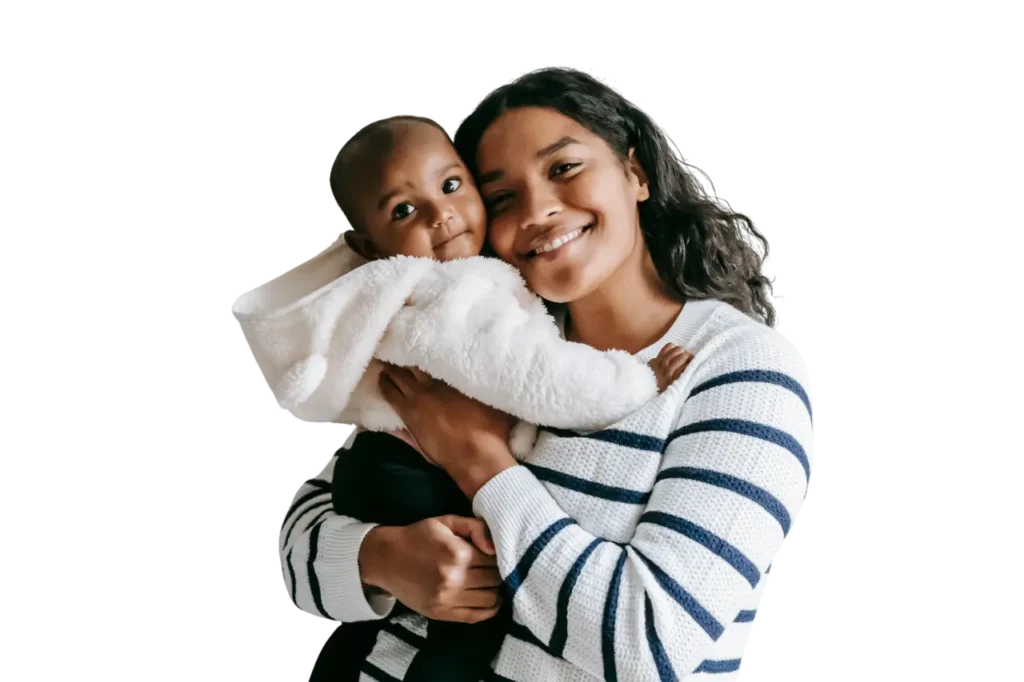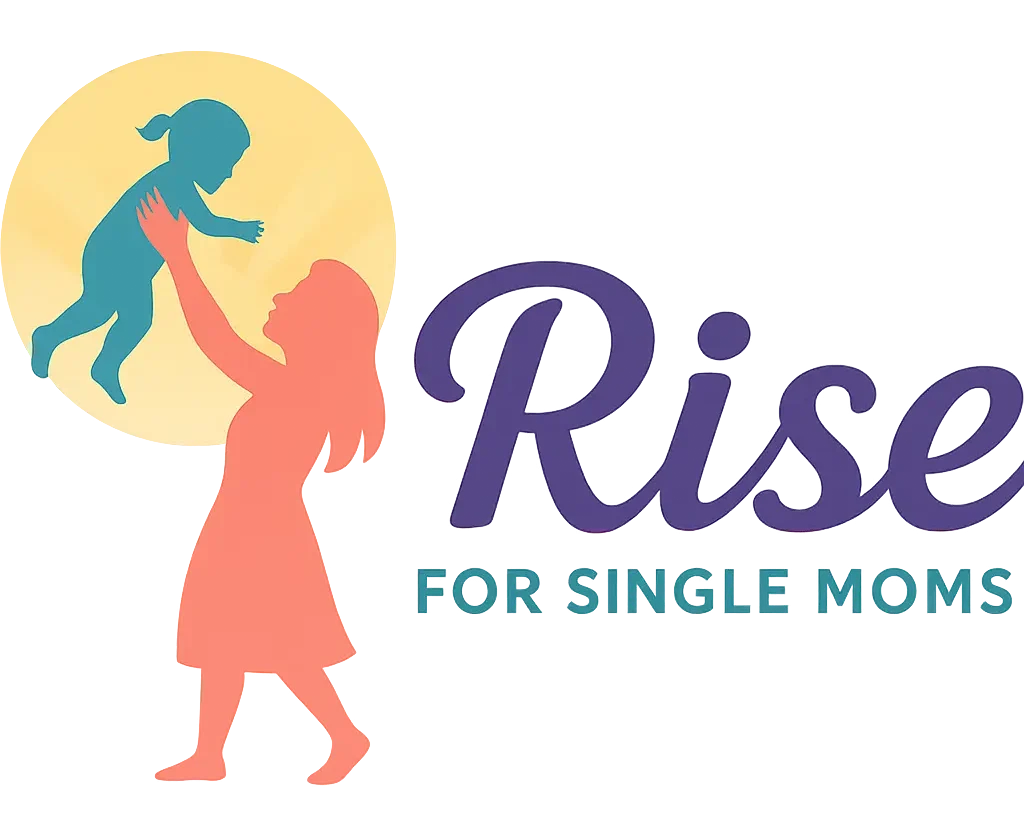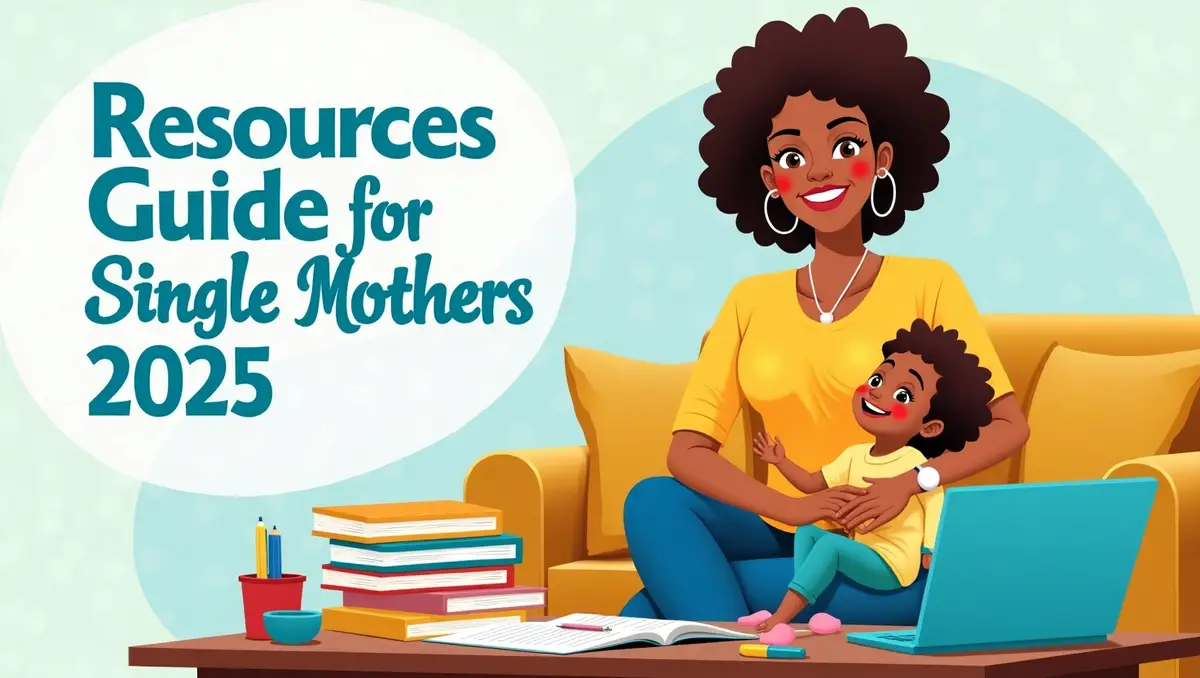Debt Relief for Single Mothers in 2025: Proven Steps to Achieve Financial Freedom
If you’re a single mom drowning in debt, it can feel like you’re gasping for air while the world keeps moving. But here’s the truth: you are not alone, and there is hope. These Debt Relief for Single Mothers programs will help you with your current financial condition. Financial freedom is possible—even as a solo parent juggling bills, kids, and the weight of responsibility.

This guide is more than just budgeting tips. It’s about rebuilding your life with courage, using proven steps, emotional strength, and the right support to achieve lasting financial freedom.
Table of Contents
Why So Many Single Moms Are in Debt—And Why It’s Not Your Fault
Single motherhood often means you’re the sole breadwinner, decision-maker, and emotional rock of the family. That’s a lot for one person to carry—especially in a system that isn’t always built to support you.
According to the U.S. Census Bureau, over 30% of single-mother households live below the poverty line. Unexpected emergencies—like job loss, medical bills, or a broken-down car—can tip an already delicate financial balance.
Let’s be clear: being in debt does not mean you’re irresponsible. It means you’ve been trying to survive—and you deserve support, not shame.
Step 1: Face Your Debt with Courage and Clarity
The first step toward freedom is knowledge.
Story: Jessica, a single mom from Ohio, spent years ignoring her bills. “It made me sick to open my bank app,” she says. But when she finally listed all her debts—credit cards, payday loans, medical bills—she realized clarity was empowering, not terrifying.
What to Do Today:
- Write down every debt: balances, due dates, interest rates.
- Use tools like Undebt.it or Mint to track everything.
- Don’t judge yourself. You’re not failing—you’re starting.
Step 2: Prioritize What Matters Most

Not all debt is equal. Some keeps the lights on; others can wait.
Pay these first:
- Essential living costs: Rent, food, utilities, transportation.
- High-interest debts: Credit cards and payday loans.
- Flexible debts: Medical or student loans often offer relief options.
Two Proven Strategies:
- Avalanche Method: Tackle highest-interest debt first.
- Snowball Method: Knock out the smallest debts to build momentum.
Pick the one that motivates you. Emotionally staying in the game matters just as much as numbers.
Step 3: Use Government and Nonprofit Support
There are resources created specifically to help families like yours. Many are underutilized because moms don’t know they qualify—or feel too ashamed to ask. Don’t let pride stand in the way of peace.
Federal and State Programs:
- TANF (Temporary Assistance for Needy Families): Monthly cash assistance and job prep.
- SNAP: Food benefits that can ease your grocery bills.
- LIHEAP: Help with heating and utility bills.
- HUD-Approved Housing Counselors: Free foreclosure prevention and budgeting help.
- IRS Fresh Start Program: Relief for back taxes and payment plans.

Trusted Nonprofits:
Organizations like the National Foundation for Credit Counseling (NFCC) offer:
- Free credit and debt counseling
- Debt Management Plans (DMPs)
- Help negotiating with lenders
Always verify you’re working with a 501(c)(3) nonprofit. Never pay upfront fees for help.
Step 4: Consider Debt Forgiveness, Consolidation, or Settlement
These tools can offer powerful relief—if used wisely.
Debt Consolidation:
Combine debts into one payment with a lower interest rate. Ideal if your credit score is at least fair (580+). Try options like:
- Personal loans from credit unions
- Balance transfer credit cards (0% intro APR)
Debt Settlement:
Negotiate with creditors to accept less than you owe. Risky, but an option if you’re severely behind. Best done with professional help from a nonprofit credit counselor.
Bankruptcy (Only If Necessary):
If you’re completely overwhelmed, bankruptcy may offer a legal reset. It’s not the end—it’s a new beginning. Consult a licensed bankruptcy attorney before choosing this path.
Step 5: Boost Your Income—Even a Little Helps
You don’t need to make thousands more. Even an extra $100–$200/month can shift momentum.
Latasha’s Story: A Georgia single mom of 3 began babysitting weekends and selling baked goods online. “It wasn’t much at first,” she says, “but it gave me breathing room.
Try These:
- Freelancing: Writing, data entry, social media, tutoring
- Gig apps: Uber, DoorDash, Instacart
- Online selling: Clothes, books, handmade crafts on Facebook Marketplace or Etsy
- Remote customer service jobs: Many are flexible and part-time
Check Work from Home Jobs on FlexJobs or your state’s Department of Human Services for programs offering employment support for single parents.
Step 6: Budget Bare-Bones—and Stick to It
You don’t need fancy software. Just a plan that works in real life.
Try a Zero-Based Budget:
Give every dollar a job—including “joy money” to avoid burnout.
Example:
- Rent: $900
- Groceries: $300
- Utilities: $150
- Debt: $150
- Transportation: $100
- Emergency Fund: $25
- Kids’ Needs: $75
- You (yes, YOU): $50
Start small. Tweak as you go.

Build an Emergency Fund—No Matter How Small
Debt often begins with a single unexpected cost. Your safety net doesn’t have to be huge.
Start with $10–$20/month. Store it in a separate savings account. Over time, it will protect you from falling back into the debt cycle.
Step 8: Find Your Village—You Are Not Alone
Debt is emotionally exhausting. You deserve more than spreadsheets. You deserve support.
Places to Find It:
- Facebook Groups like “Single Moms Empowered” or “Financially Free Single Mothers”
- Reddit communities like r/MomForAMinute
- Local nonprofits or church programs with financial coaching
- YWCA or Salvation Army support groups for mothers in crisis
Surround yourself with people who remind you: you are not your debt—you are your strength.
Step 9: Track Your Wins (Even the Tiny Ones)
Progress may feel slow. Celebrate it anyway.
Marissa’s Story: “Every $100 I paid off, I made a handmade sticker chart. My daughter helped me color in the boxes. It kept me going.”
Tracking isn’t just practical—it’s healing.
State-Level Debt Relief Assistance Programs for Single Mothers in 2025
While federal aid is vital, many states offer targeted debt relief programs that single mothers often overlook. These programs can provide immediate, localized help.
California – CalWORKs and Rental Relief
CalWORKs supports single mothers with cash aid, job training, child care assistance, and rent support. Emergency rental programs also cover up to 18 months of past-due rent and utilities.
More info: cdss.ca.gov/calworks
New York – Safety Net Assistance
When TANF runs out, New York offers Safety Net Assistance (SNA), providing cash benefits, shelter aid, and utility support, especially useful during transitions.
More info: otda.ny.gov/programs/sna/
Florida – Temporary Cash Assistance (TCA)
Florida’s TCA program helps single moms with monthly cash support and workforce reintegration programs for up to 48 months.
More info: myflfamilies.com
Texas – Comprehensive Energy Assistance Program (CEAP)
CEAP helps single moms with electricity bill reductions, arrears forgiveness, and weatherization assistance.
More info: tdhca.state.tx.us
Georgia – HOPE for Homeowners
This state program provides mortgage relief, foreclosure prevention, and free credit counseling through local nonprofits.
How to Spot and Avoid Debt Relief Scams
Unfortunately, scammers often prey on single moms looking for financial help. Here’s how to stay safe.
Red Flags to Watch For
- Guaranteed results or “debt erasure” promises
- Upfront payments or hidden fees
- Pushy sales tactics or refusal to answer your questions
- Lack of a verifiable address or credentials
Where to Find Legitimate Help
Stick to:
- .gov websites like benefits.gov
- Certified nonprofits like the NFCC or local United Way chapters
- State/local government websites
- Call 211 for trusted resources in your area
Tip: If something feels off, it probably is. Always verify credentials before sharing your personal information.
Real-Life Story: How One Single Mom Paid Off $18,000 in 14 Months
Meet Sarah Thompson, a 32-year-old single mother of two from Ohio. After her 2022 divorce, she was left with two kids, no savings, and nearly $18,000 in debt:
- $7,000 credit cards
- $5,000 medical bills
- $6,000 back rent/utilities
“I was skipping meals to feed my kids,” she says. “I felt like I was drowning.”
How She Turned Things Around
In early 2023, Sarah called 211 and was connected with:
- TANF and SNAP – Covered food and transportation
- LIHEAP – Paid her utility bills
- State rental assistance – Prevented eviction
- GreenPath – Consolidated her credit debt into one low monthly payment
- A free budgeting class – Helped her manage expenses better
She used the debt snowball method to pay off her smallest debts first, building confidence with each step.
The Outcome
By March 2024, Sarah had paid off every dollar. Her credit score jumped 90+ points, she now works full-time, and has a savings account for the first time in her life.
Sarah’s Words to Other Moms
“Don’t be ashamed to ask for help. These programs saved my life—and they can save yours too.”
Sarah’s story is proof that with the right support and tools, single moms can take back control and achieve financial freedom.
Final Thoughts: You’re Stronger Than You Think
Debt may be part of your story—but it’s not the end of it.
You are a provider. A protector. A warrior wrapped in love. The fact that you’re reading this means you’ve already taken the first brave step.
So take the next one. And the next.
You don’t have to do it all today. You just have to keep going.
You’ve got this—and you’re not alone.
Frequently Asked Questions (FAQ)
Starting the journey towards debt relief can feel overwhelming, but you’re already taking a big step just by seeking solutions. Here’s how to begin:
- First, create a list of all your debts and prioritize them by interest rate or amount.
- Set a realistic budget that allocates funds towards paying down debts.
- Explore available government assistance programs and nonprofit organizations that offer support for single moms.
With determination, you can regain control of your finances, one step at a time. Remember, you’re stronger than you think!
The fastest way to reduce debt is to use effective strategies like:
- The Snowball Method: Focus on paying off the smallest debt first to build momentum.
- The Avalanche Method: Pay off high-interest debt first to save money over time.
You might also consider debt consolidation to lower your interest rates. Every little action you take brings you closer to financial freedom.
Yes! There are several government programs designed to help single moms manage financial hardship. These may include:
- TANF (Temporary Assistance for Needy Families) provides cash aid for low-income families.
- SNAP (Supplemental Nutrition Assistance Program) helps with food costs.
- LIHEAP (Low-Income Home Energy Assistance Program) can assist with heating bills during the winter months.
Additionally, debt forgiveness programs or assistance with tax debts may be available. Don’t hesitate to reach out to local resources for help!
Increasing your income might seem challenging, but there are many ways to do so:
- Freelancing: Writing, graphic design, and tutoring are great ways to make extra money on your schedule.
- Gig Economy Jobs: Platforms like Uber, DoorDash, or TaskRabbit offer flexible work hours.
- Sell Products Online: Consider selling handmade crafts or unused items on websites like Etsy or eBay.
Your resilience and determination are your greatest assets in this journey!
Credit card debt can feel like a mountain to climb, but the key is making small, steady progress:
- Focus on the highest interest rate debts first (Avalanche method).
- Consider balance transfer cards that offer 0% interest for a limited time.
- Look into debt consolidation or work with a credit counselor to manage payments.
With patience and focus, you can reduce your credit card debt and regain financial control.
Bankruptcy should be considered as a last resort. It can offer a fresh start, but it also has long-term consequences, such as staying on your credit report for years. Before making a decision, explore other options like debt settlement, consolidation, or speaking with a financial advisor to find the best solution for your situation.
It’s normal to feel overwhelmed, but remember—small wins add up. Celebrate each milestone, whether it’s paying off a small debt or sticking to your budget for a month. Also, track your progress and remind yourself of the strength and resilience that have brought you this far. You’ve got this!
Absolutely! While it may take time, the key is staying focused and organized. Keep a budget, explore income opportunities, and find community support. You are teaching your children invaluable lessons about perseverance and financial responsibility.
There are several local resources to assist single mothers:
- Nonprofits and charities: Look for local organizations that offer financial counseling and assistance.
- Government websites: Visit your state’s social services site for more information on available programs.
- Community groups: Churches or community centers often have support services for single moms in need.
You don’t have to do this alone—help is available in your community!
Asking for help is a sign of strength, not weakness. There are so many resources available, and it’s okay to reach out. Seeking help will bring you closer to financial freedom. You deserve support, and you’re not alone in this journey.







4 Comments